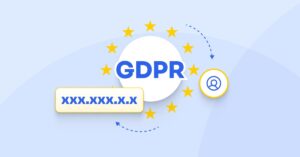Introduction
Having a thorough understanding of the various types of data available and their applications is essential in today’s data-driven business environment. There are four main types of data: zero-party, first-party, second-party, and third-party. Each of these types possesses its own unique characteristics and can prove highly valuable for marketing and customer engagement efforts. By examining the distinctions between these data types, we can gain a deeper understanding of how to harness data effectively to achieve our business objectives. Armed with this knowledge, we can make well-informed decisions and optimize our marketing strategies to drive growth and success.
What is zero-party data?
Zero-party data is the information that customers willingly and proactively share with businesses. Unlike other data types, zero-party data is explicitly provided by customers through surveys, preference centers, feedback forms, and direct interactions. This valuable data includes personal preferences, communication channels, and specific interests, providing businesses with unique insights into individual customers.
Zero-party data is important for businesses aiming to create highly personalized and targeted marketing campaigns. By understanding customers’ preferences and communication channels, companies can effectively tailor their ad campaigns and content to resonate with their target audience. Collecting zero-party data empowers businesses to build stronger customer relationships, foster brand loyalty, and gain a competitive edge.
The power of first-party data
First-party data is the data collected directly from customers as they interact with a company’s own channels, such as websites, mobile apps, and social media accounts. This data encompasses customer behavior, website engagement metrics, purchase history, and communication preferences. First-party data is an invaluable asset as it provides businesses with accurate and reliable insights into their existing customer base.
Collecting first-party data is a fundamental data collection method for businesses looking to optimize their marketing strategies and content. Companies can identify customer preferences, pain points, and web activity by analyzing first-party data, enabling them to deliver relevant and personalized experiences. Utilizing first-party data enhances customer relationship management and fosters brand loyalty, which can lead to increased customer engagement and long-term success.

Exploring second-party data
Second-party data refers to someone else’s first-party data that is shared or acquired through a mutually beneficial partnership. In this type of data exchange, two companies collaborate to share data, enabling each partner to gain access to additional customer insights. For example, if Company A shares its first-party data with Company B, both companies can benefit from a broader understanding of their target customers.
Utilizing second-party customer data can offer numerous advantages, such as expanding customer profiles and reaching new segments. By leveraging someone else’s first-party data, businesses can enhance their marketing strategies and improve audience targeting. However, it is crucial to establish trust and ensure data privacy compliance in second-party data partnerships.
Unraveling third-party data
Third-party data is data obtained from external sources outside of a company. These sources may include data aggregators, data brokers, and other businesses that collect consumer data from various channels and websites. Third-party data is often purchased or licensed to complement a company’s first-party data and gain insights into broader market trends.
While third-party data can provide valuable insights into consumer behavior and preferences, businesses should approach it with caution. The quality and accuracy of third-party data can vary significantly, leading to potential inaccuracies in the information. Therefore, businesses should validate and cross-reference third-party data to ensure its reliability and relevance.
The benefits of each data type
Zero-party data:
High relevance: Voluntarily provided by customers, ensuring accuracy and relevance.
Personalization: Enables businesses to create personalized experiences and targeted ad campaigns.
Stronger relationships: Builds trust and fosters stronger connections with customers.
First-party data:
Accurate and reliable: Directly collected from your own audience, ensuring data accuracy.
Informed marketing strategies: Helps in tailoring marketing strategies and content based on customer behavior.
Customer segmentation: Allows businesses to segment their audience for targeted campaigns.
Second-party data:
Expanded customer profiles: Access to additional customer insights from a trusted partner.
Targeting opportunities: Enables businesses to reach new segments and expand their reach.
Mutually beneficial partnerships: Establishes valuable data-sharing partnerships.
Third-party data:
Broad market insights: Provides a wider view of market trends and consumer behavior.
Cost-effective: Can be a more affordable option compared to collecting data from scratch.
Quick implementation: Allows businesses to access data without building their data collection infrastructure.

The main differences
Each data type has its own unique characteristics, ranging from the source of data collection, ownership, and level of personalization to data quality and applications. Zero-party data stands out for its voluntary and explicit nature, enabling highly personalized experiences. First-party data offers reliable insights directly from a company’s own audience. Second-party data facilitates data-sharing partnerships, while third-party data provides broader market insights but may vary in quality. Understanding these differences empowers businesses to make informed decisions, optimize marketing strategies, and leverage data effectively to create meaningful customer experiences.
Source of data
Zero-party data: Customers willingly and proactively provide zero-party data through direct interactions with businesses. This data is explicitly shared, reflecting individual preferences and communication channels.
First-party data: Companies collect first-party data directly from their customers as they interact with owned platforms, such as websites and mobile apps. This data is passively obtained from customer behavior and interactions.
Second-party data: This data type is acquired from a trusted partner who shares their first-party data with another company. It involves a collaborative data exchange between two businesses.
Third-party data: Obtained from external sources outside of a company, third-party data is collected by data aggregators, data brokers, and other entities. It does not originate from the company’s own channels.
Ownership
Zero-party data: Customers retain ownership and control over their zero-party data. Businesses may collect and use this data with proper consent and transparency.
First-party data: The company that collects the first-party data owns and controls it. This data provides businesses with insights into their own audience and customer base.
Second-party data: Although the second-party data is shared, ownership remains with the original company that collected it. The partner company gains access to this data for specific purposes.
Third-party data: Third-party data is not owned by the company using it. Instead, it is acquired from external sources, and the ownership belongs to the entities that collected it.
Data collection method
Zero-party data: Actively provided by customers through actions like surveys, feedback forms, and preference centers. Customers voluntarily share this data.
First-party data: Passively collected as customers interact with a company’s owned platforms, such as websites and mobile apps. The data is gathered from user behavior.
Second-party data: Shared between two companies through a mutual data-sharing agreement. It involves an intentional exchange of specific data sets.
Third-party data: Obtained from external sources, such as data aggregators or brokers, who collect data from various channels and websites.
Level of personalization
Zero-party data: Highly personalized, as customers explicitly provide their preferences and interests. Businesses can use this data to create tailor-made experiences.
First-party data: Offers personalized insights into the behavior and preferences of the company’s existing customers. It helps in tailoring content and marketing strategies.
Second-party data: Provides additional insights into a partner company’s customer base, enabling more targeted marketing efforts.
Third-party data: Provides broader market insights but may not be as personalized as first-party or zero-party data, as it includes data from various sources.
Data quality and accuracy
Zero-party data: Since customers willingly provide this data, it is usually accurate and relevant. However, its scale may be limited due to the voluntary nature of sharing.
First-party data: Offers high-quality and reliable insights, as it directly comes from the company’s own audience and interactions.
Second-party data: Quality depends on the trustworthiness of the partner company and the accuracy of their data collection methods.
Third-party data: Quality can vary significantly depending on the sources and data collection practices of the external entities.
Usage and applications
Zero-party data: Used to create personalized marketing campaigns, targeted advertisements, and tailored customer experiences.
First-party data: Applied to optimize marketing strategies, create customer profiles, and improve customer relationship management.
Second-party data: Enables businesses to gain additional audience insights, expand market reach, and enhance targeting capabilities.
Third-party data: Utilized to gain broader market trends, supplement first-party data, and identify potential customer segments.

The importance of data quality and privacy
Regardless of the data type, data quality and privacy are crucial considerations for any business. High-quality data is essential for making informed decisions and creating effective marketing strategies. Accurate data ensures that businesses have a clear understanding of their customers, their preferences, and their needs.
Additionally, data privacy is a top priority to protect customer trust and comply with relevant regulations. Businesses must adhere to data privacy laws, such as GDPR and CCPA, and communicate transparently with customers about how their data is collected, used, and protected.
Leveraging data for optimal marketing strategies
Now that we have explored the different data types and their benefits, it’s time to leverage data effectively to drive successful marketing strategies. Here are some key steps to consider:
Data collection and management:
Implement robust data collection methods to gather first-party data directly from your customers.
Leverage data management platforms (DMPs) to organize and analyze data effectively.
Personalization and targeting:
Utilize zero-party data to personalize content, ads, and communication for individual customers.
Segment your audience based on first-party data insights for targeted marketing campaigns.
Collaborative data sharing:
Explore second-party data partnerships with trusted companies to enhance audience insights.
Be transparent and compliant in data-sharing agreements.
Validate third-party data:
Cross-reference and validate third-party data to ensure accuracy and relevance.
Be cautious when using third-party data for critical business decisions.
Conclusion
Collecting data is crucial in modern marketing strategies, and different types of data have specific roles in shaping business success. Zero-party and first-party data offer valuable insights into individual customers, while second-party and third-party data provide broader market perspectives. By using data effectively, businesses can boost customer engagement and enhance marketing ROI.
Therefore, it’s vital to embrace data-driven decision-making, prioritize data quality and privacy, and utilize the various data types available to gain a competitive advantage in the digital landscape. Success lies in comprehending your customers, providing personalized experiences, and making informed decisions supported by data.







